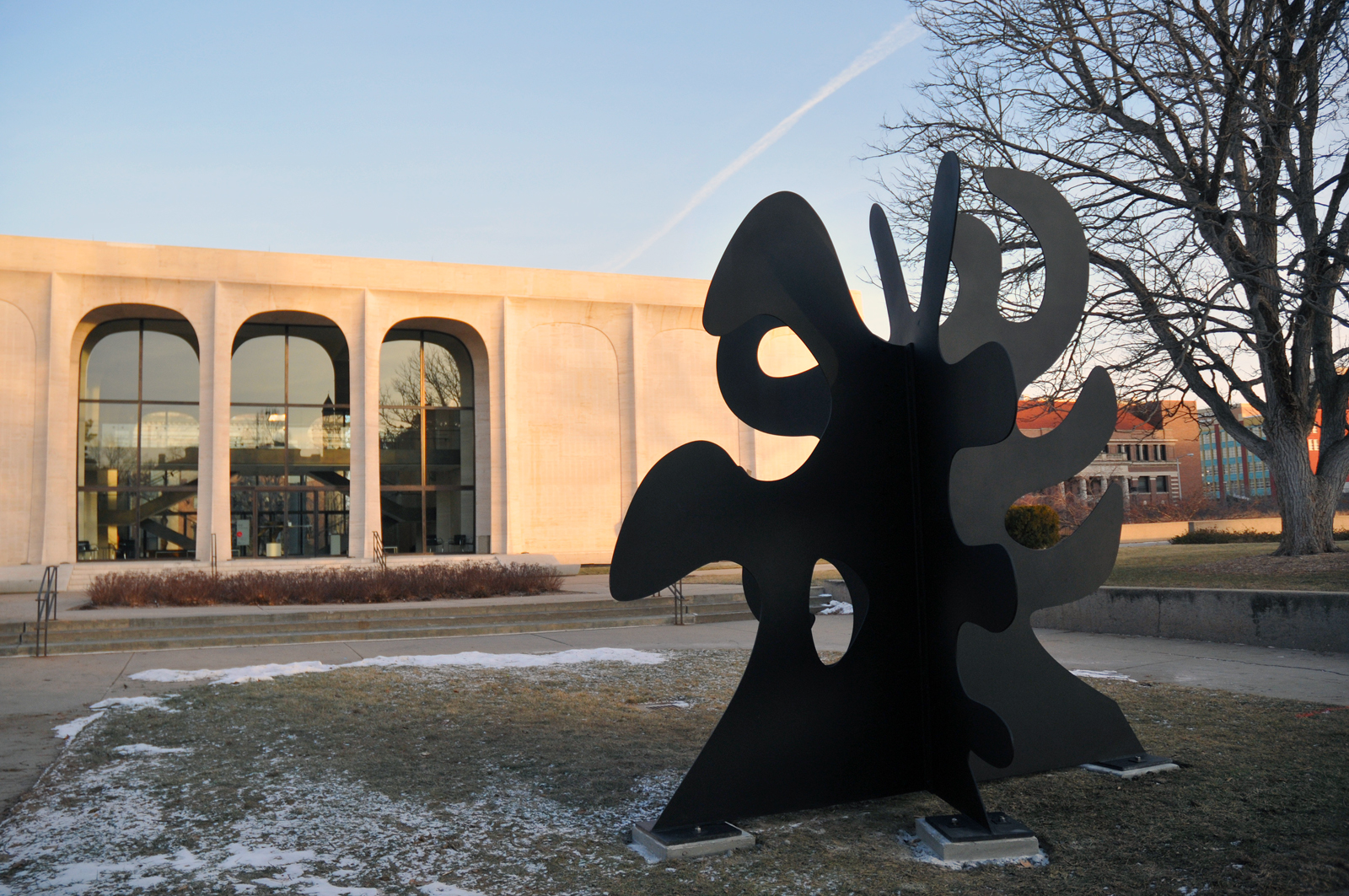
"Tripes," a sculpture by Alexander Calder, was installed Jan. 19 on the west side of the Sheldon Museum of Art.
Calder finished the sculpture in 1974, near the end of his life. "Tripes" was previously on display in London as part of a celebration of the 2012 Olympics. The sculpture is on loan from the Calder Foundation of New York and will be on display through October.
"Our mid-century modernist museum, the Sheldon, cries out for a Calder and we finally have one," said J. Daniel Veneciano, director of the Sheldon. "It's been a wish of mine for Sheldon since I arrived. The Calder adds a major American artist to the university's historically important sculpture garden."
"Tripes" is 12 feet tall and made of painted sheet metal. The design is a phantasmagorical tree that changes shape and form as individuals walk around it.
Veneciano said "Tripes" works well with the exterior lines of the Phillip Johnson-designed Sheldon.
"It's the perfect complement — a great American artist in relationship to the work of a great American architect," said Veneciano. "Both are minimal in their own way. Both have sensuous arcs and curves. One is elegant. The other is whimsical."
The sculpture will be officially dedicated during the Sheldon's First Friday event on Feb. 1.
Calder (1898-1976), the son and grandson of well-known sculptors, is considered one of the greatest sculptors of the 20th century. His father, Alexander Stirling Calder, produced numerous public installations. His grandfather, Alexander Milne Calder, is best known for the statue of William Penn atop the tower of Philadelphia's city hall.
Calder first trained as an engineer before studying at the Art Students League in New York. He worked in both the United States and his adopted country, France.
While in France, Calder was influenced by artist friends Joan Miró, Man Ray, Fernand Léger and Piet Mondrian. It was also where he was introduced to abstract art.
Calder's work has been described as "drawing in space." His engineering training helped Calder create sculpture that seemed to defy gravity. He also introduced the mobile into the sculpture genre. His monumental works are called stabiles.
For more information, go to http://www.sheldonartmuseum.com.